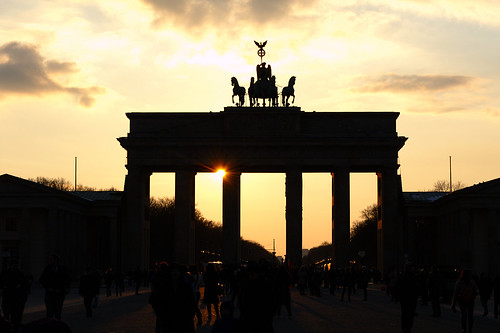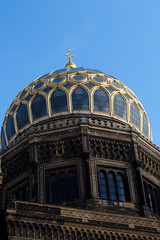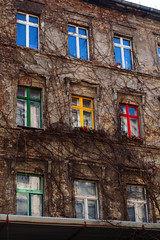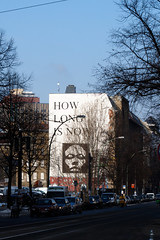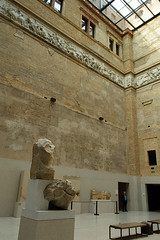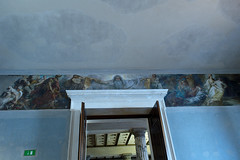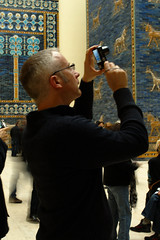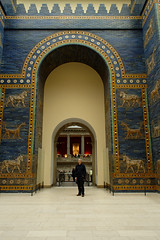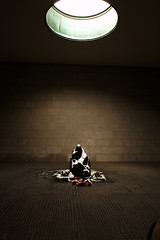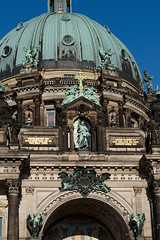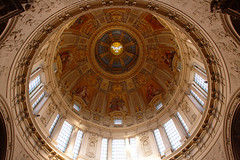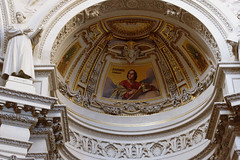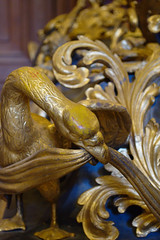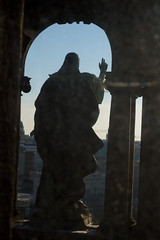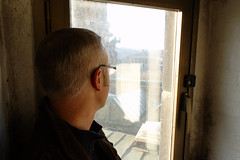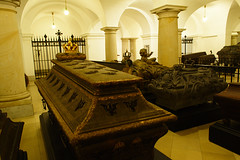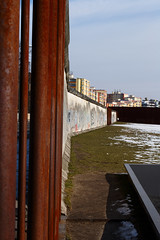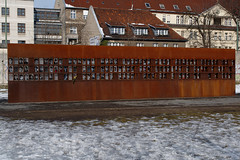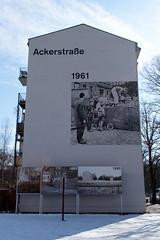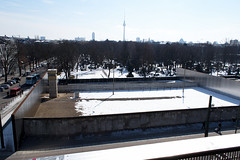I’d heard of Frederick the Great before I listened to this In Our Time programme about him – I knew he was an 18th Century ruler of Prussia, and I knew he was a flautist (having seen a painting of him playing the flute). What I wasn’t aware of before was that he was obsessed with being famous, and had quite serious Daddy issues. The experts who discussed him on the programme were Tim Blanning (University of Cambridge), Katrin Kohl (University of Oxford) and Thomas Biskup (University of Hull).
Frederick was born in 1712 and had what sounds like a rather appalling childhood. The first part, until the age of 7, when he lived in his mother’s court was the better part. It was during this time that he acquired his interest in and love of literature, philosophy and the arts. He also forged a strong bond with one of his sisters in particular – so much so that in later life he built a temple to friendship for her with a statue of her in it. But the court was full of intrigue and he and his siblings were frequently pawns in the schemes of various factions. So as well as the arts he also learnt to live his life on display and to cultivate an image that he wished to present to the rest of the world.
His later childhood and early adulthood were spent at his father’s court. Frederick Wilhelm I was a parsimonious Calvinist, a pious, frugal man who was also keenly interested in military matters. He had spent his reign building up Prussia’s military and treasury. His son shared none of his interests nor his Calvinist virtues and resented the pressure to become a chip off the old block. Frederick Sr would abuse his son both in private and in public, by beatings and by humiliating the young man. During his teenage years Frederick once attempted to escape his father’s court. He and some friends concocted a plan to escape from their military assignment and flee to Britain – the experts described this as a fiasco that failed almost before it began. Frederick and one of his friends were captured and locked up. For some time Frederick was allowed to believe he would be executed for desertion – this (obviously) did not happen, but his friend was executed. Frederick was forced to watch this execution which left him somewhat traumatised – the friend was someone Frederick was very close to, perhaps even his boyfriend.
Summing up this section the experts all agreed that a childhood such as Frederick had has the potential to be psychologically damaging – and that in Frederick’s later behaviour there is evidence that he was indeed damaged by it.
When his father died in 1740 Frederick inherited the throne of Prussia. At the time Prussia was too big to count as a minor European state, but too small to be a major power. It did, however, have a fantastic military and a large treasury – due to Frederick Wilhelm I’s frugal military obsessiveness. However the military hadn’t actually been used – and so practically the first thing Frederick did on coming to the throne was invade Silesia, in part to prove himself a mightier man than his father. It wasn’t just a response to his Daddy issues – it was also an astute political move. At the time the Hapsburg dynasty was undergoing a crisis so it was a good time to try and snap up a few territories whilst they were otherwise occupied. Silesia was near Prussia, and rich, so a good choice for Frederick. The initial campaign went very well, and this was the beginning of several military campaigns. By one point Frederick’s Prussia stood almost alone against all the other powers of Europe who had allied against him – his only ally was Britain. Despite being vastly outnumbered Prussia had the advantage that Frederick was the sole decision maker and was actually on the scene. The other countries all had different aims, which hampered co-ordination between them, and they had to send communications long distances between the commanders on the field and the decision makers at home. Although of course this advantage for Prussia could also backfire if Frederick’s decisions were unwise!
Napoleon regarded Frederick as a great strategist – I imagine he saw Frederick’s standing alone against the other European powers as mirroring his own situation. However the experts were firm in their disagreement with this assessment – one of them (I forget who) dismissed it with the words “Napoleon was wrong about a lot of things”! The consensus was that Frederick was a great warlord – charismatic and capable of leading his troops – but not a particularly good general. Frederick’s brother was a better general, and never lost a battle – however he would’ve lost Silesia in the first campaign by (sensibly, based on the situation at the time) taking the peace deal that involved handing the territory back. Frederick had the drive and desire to win at all costs, and because of his charisma the army would follow him and he lead them to greater gains.
One key success was the capture of West Prussia. The kingdom that Frederick inherited was made up of two geographically separated territories and annexing West Prussia made his country contiguous. In retrospect this was the beginning of the partition of the territories making up Poland between the surrounding countries until there was no Poland left.
Frederick was obsessed with gaining fame and status – he wanted to be remembered himself, and he also wanted Prussia to be a major player in European politics. After the successful campaign in Silesia he instructed the media to refer to him as Frederick the Great (which was a successful PR move as we still refer to him like that today). He carefully crafted other aspects of his image to gain recognition. His patronage and participation in the arts was partly driven by this. He wrote poetry in French which was rather conventional, and whilst not bad it was also not good either. He also, as I mentioned before, played the flute. But art was not just a matter of image for Frederick, it was also his spiritual core. He was not religious himself, and was scathing about religious belief. Art and music were his ways of connecting with a sense of transcendence. He wasn’t, however, particularly interested in German language literature – and the experts said his primary influence in this area was ignoring it enough for independent thinkers to flourish.
His court was renowned for its tolerance and for being a centre of learning. Of course that’s tolerance in a very 18th Century sense – in this case in particular it meant that philosophers who spoke against religion were welcome there after their own countries had hounded them out. Courtier for a while at Frederick’s court was Voltaire – one of the most famous philosophers of the age. He corresponded with Frederick for decades – he was older and something of a mentor to Frederick, including correcting his French (including his poetry). Like Frederick, Voltaire was keen to gain fame and be remembered, and the two collaborated on polishing each other’s images. Despite the long running correspondence Voltaire was only at Frederick’s court for a few years. In person the two big egos did not get along as well as they hoped. Frederick didn’t treat Voltaire with enough respect for Voltaire’s tastes. And Voltaire got mixed up in shady business dealings that embarrassed his host. After 3 years he moved on, but they kept corresponding.
Frederick was almost certainly gay. As I alluded to above his father executed a man who was perhaps his boyfriend whilst Frederick was a teenager. Frederick did marry – a match arranged by his father, and initially it was probably welcome to him. It meant that as a young adult he was able to set up his own court (as a married man) rather than continuing to live in his father’s court. However once Frederick’s father died he had no incentive to continue the charade – the two never lived together again. I don’t think they talked on the programme about what Frederick’s wife thought this (it would be a bit off-topic). She kept court in Berlin after they separated – which was the capital of Prussia, so needed a royal presence. Frederick hated the city (his Daddy issues rearing their head again) and so he had no inclination to live there himself. The experts felt reasonably sure that people at the time were aware of Frederick’s sexuality. The terms “gay” and “homosexual” didn’t exist in their modern sense, but his favourites were referred to as being “like a royal mistress” which implies awareness of his intimacy with them.
Ultimately Frederick was successful in his search for lasting fame. He has been remembered since his death in 1786 as the man who put Prussia on the map. Over the years various groups have held him up as an icon or hero – for his tolerance, for his military successes, for the arts, for the sciences, for pushing on at all costs, etc. After the Second World War (and Hitler’s appropriation of his image for the Third Reich’s propaganda) his star dimmed somewhat, but there has been a more modern resurgence of interest in him. The programme ended with the note that whilst he’s nowadays held up as a proto-Bismarck and pre-figurer of a united Germany, he regarded himself as a Prussian nationalist not a German one.
